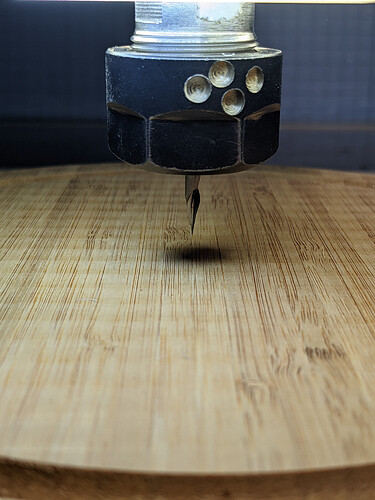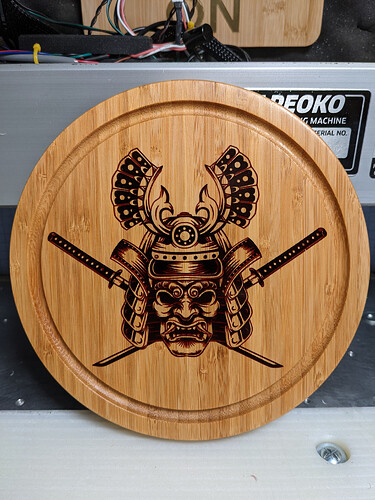Hi @Gerryattrick,
The first thing I’ll say, which is not going to be helpful I’m afraid, is that pine is unfortunately not the best for intricate v-carving (YMMV…), it doesn’t hold detail as well as other tighter-grain woods.
That said, since this is what you are dealing with, and your dragon is probably going to be small (jewellry box sized…) with lots of details I would do two things:
- use a 30deg vbit or even a lower angle, as you said. I used a 25° single flute vbit for this samuraï and absolutely fell in love with that tool. It was not even particularly expensive (but I sourced it locally in France so it won’t help you). It looks sharp because it is (very much so)


- use Advanced V-carve to set a depth limit of your choosing, probably 1.5mm to 2mm in your case? since that dragon has a mix of very narrow features and wider areas (e.g. the legs), depth-limited v-carving is a must I think.
And then…flatness and levelness of the stock with respect to the machine axes will be absolutely critical to get a good result, any minute difference in surface height and you will get either uncut areas or features that are cut too deep/are too wide and detail is lost. And there…I’m afraid the only sure way to get this is to surface the stock just before v-carving, and without removing it from the machine in between. Since you already painted the box white…not ideal, but maybe consider re-surfacing the top, then re-painting, then v-carving. You may get away with not doing it, but all bets are off, and since you only have one shot at this…
Precise Z-zeroing will also be a must, as for all v-carving jobs. If you are going to zero manually using the paper method, using really small increments at the end and stop as soon as you feel the bit barely catching. Those low angle vbits are so pointy, that it is quite easy to jog them down a little too much and have a zero that ends up being a hair below where it should be…but at that level of detail, it matters.
I would not worry about breaking vbits in pine, it’s so soft that unless you have your feeds and speeds very wrong, you are more likely to get a messy cut than breaking anything.
Finally: an epoxy inlay after applying a coat of shellac would make the v-carve pop-up really nicely, but that’s a discussion for another day!